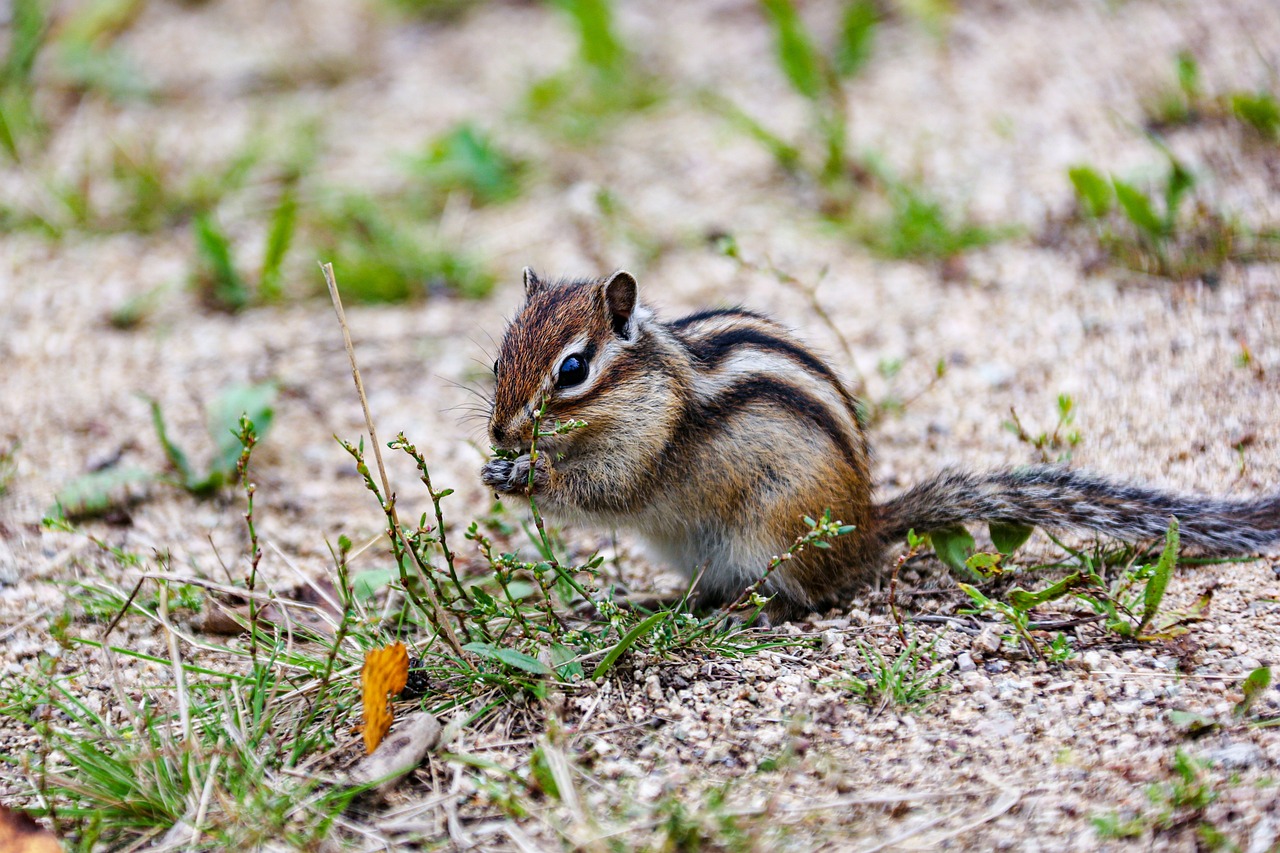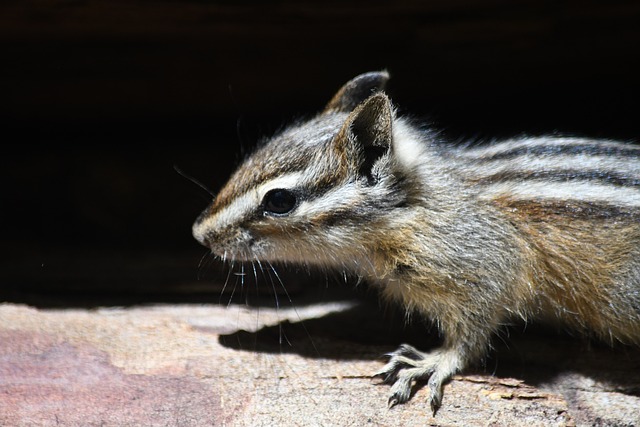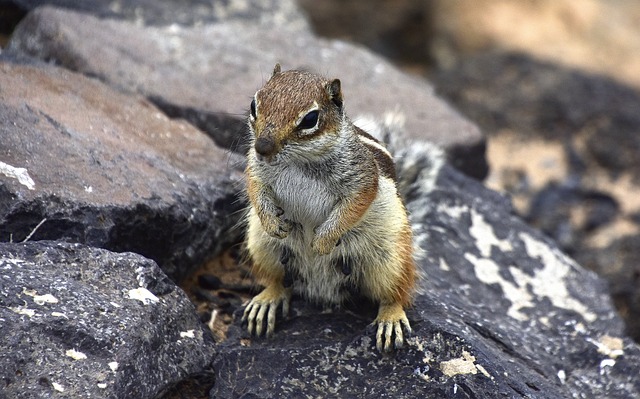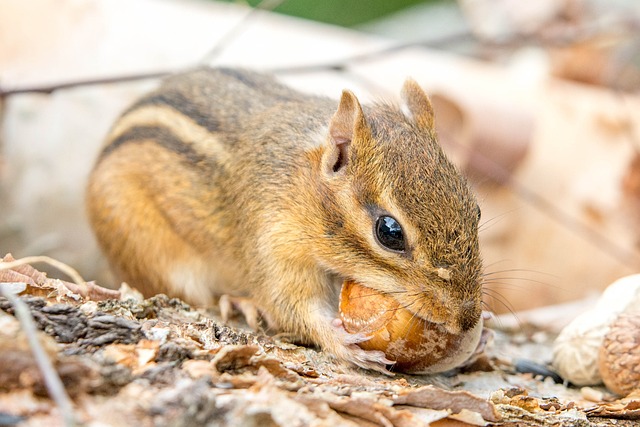The Siberian chipmunk, also known as the golden chipmunk, chipmunk, five-browed, chipmunk. There are 10 subspecies. It is medium-sized, with a body length of 13-16 centimeters and a tail length of 9-13 centimeters.
What is the Siberian Chipmunk?
The top of the head is brownish-black, the top and bottom of the eyes and the edges of the ears are white, the back of the body is light brown, and there are 5 distinct black longitudinal stripes on the back, the middle one is the longest and extends forward to the top of the head, and the outermost 2 are shorter and surrounded by white stripes. The limbs are pale yellow. Ventral surface and inside of limbs grayish white. The rump area is brown. The center of the ventral surface of the tail is brownish yellow. Caudal hairs are long, fluffy, broomlike, and extend to the sides. The limbs are slightly longer and the ear shells are clearly exposed outside the hair coat. The forelegs are bare and have cheek pouches.

It inhabits mountainous coniferous forests and mixed coniferous forests. It is an omnivore, feeding on tree seeds, seeds, grains, fungi, fruits, vegetables, insects, small birds and lizards. Half arboreal, half terrestrial. Mostly builds holes under trees. Daytime activity. Good tree climber and agile. Hibernates in winter. Breeds once a year with 4-6 litters.

Hair from head to back is light brown to blackish yellowish brown, with five distinct black longitudinal stripes on the back, separated by four yellowish stripes. The middle one is black and extends from the top of the head back to the base of the tail. The outer two are blackish brown and the outermost two are white, both starting at the shoulders and ending at the rump.

The tail hairs are blackish brown above and orange below, and the ear shells are blackish brown with white sides. The dorsal hairs are yellowish brown, the rump hairs orange, earthy yellow or brown, and the limbs are the same color as the dorsum of the body. The thorax, ventral surface and inner side of the limbs are grayish white or white, and the central part of the ventral surface of the tail is brownish yellow.

Mainly active during the day, most active in the morning and evening, more time on the ground, less activity in the trees. Good tree-climbing, agile and curious action, steep slopes, cliffs, tree trunks can climb, from time to time to make a piercing call. Semi-hibernating, early spring and late fall also have a small amount of activity. The largest number of chipmunks is found in mid-July throughout the year, which is related to the activity of young mice coming out of their nests.

Siberian Chipmunk Survival
Chipmunk is a very cute little animal, I believe that many people have never seen it, most of their images are in some books, textbooks, so many of us even if we have not seen them, they will feel very familiar. Moreover, the fun you get from raising this cute little animal won’t be less than raising cats and kittens. Let’s get to know this cute little animal.

These adorable little creatures crave long periods of solitude and can hide very large amounts of food in their mouths. Eastern chipmunks are common in the eastern U.S. and southern Canada, inhabiting deciduous woodlands and city parks. Chipmunks have big eyes, thick fur, regular stripes, and chubby cheeks – all in all, they’re very cute! You may have seen them in zoos, wild woodlands, or in Disney cartoons. They are not only cute, but also have interesting diets, living habits and personality preferences!

There are 25 species of chipmunks in Canada and Mexico, and their habitats include forests, deserts, and urban suburbs. There is only one species of chipmunk that has made its home outside of North America, and that is the Siberian chipmunk.

Some chipmunks like to nest in logs, shrubs, or make huge burrows in the ground. They make false entrances to confuse trespassers, have interior tunnel structures that can reach 3 to 9 meters, feature food storage and nurseries, and are decorated with clean foliage and other plants.

Almost any predator larger than a chipmunk is a potential threat to them, such as owls, hawks, weasels, foxes, wolves, raccoons, bobcats, lynxes, cats, dogs, snakes, and even their closest relative, the red squirrel! In order to avoid becoming a meal for other animals, chipmunks have to be fast and agile and only move around their burrows. They are always on the lookout for food, and when they see danger, they run back to their burrow, hide in the bushes, or even climb a tree.

Starting in late October, they gradually enter a state of hibernation, with their heart rate slowing down and their body temperature dropping until March or April. But unlike bears, chipmunks don’t store fat ahead of time to survive the entire cold season. They wake up periodically to stock up on nuts and seeds and even venture outside to forage for food.

Chipmunks are meant to hibernate, and those who engage in engineering hate chipmunks because they make holes in the ground, about 10-15 meters below ground, and make a big hole in the ground, which holds its spring, summer, and fall stores of food, especially nuts, and if someone digs a chipmunk hole in the winter, that one he will GET at least 100 large, large nuts.

Chipmunks are omnivorous, feeding on beans, wheat, grains and squash. Spring invasion of farmland digging and eating sown crop seeds, fall use cheek pouches to steal and transport a large amount of grain, a warehouse storage grain can be up to 5 ~ 10 pounds. It also climbed to the tree to eat walnuts, apricots, apples, pears and so on. Because of the food storage place memory is not strong, to a certain extent, the role of “seeding”.

Siberian Chipmunk Fur
Siberian chipmunk head to the back of the hair is light brown to black and yellowish brown, the back of the five obvious black longitudinal stripes, between the four yellowish stripes apart. The center one is black and extends from the top of the head back to the base of the tail. The outer two are blackish brown and the outermost two are white, both starting at the shoulders and ending at the hips.

The Siberian Chipmunk‘s tail coat is blackish brown on top and orange on the bottom, and the ear shells are blackish brown with white sides. The dorsal fur is yellowish brown, the rump fur is orange, earthy yellow or brown, and the limbs are the same color as the back of the body. The thorax, ventral surface and inner side of the limbs are off-white or white, and the center of the caudal-ventral surface is brownish-yellow.